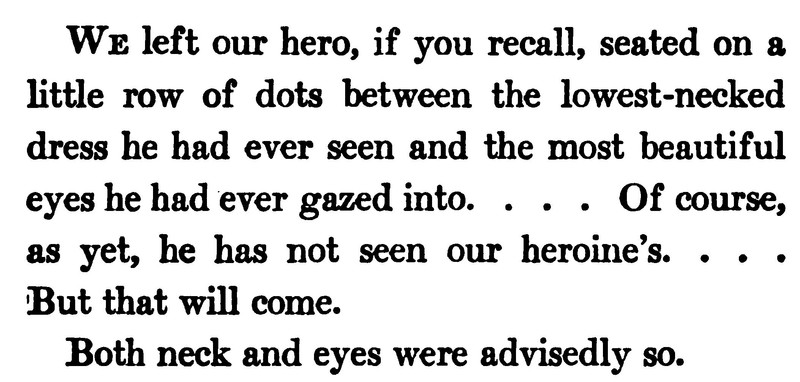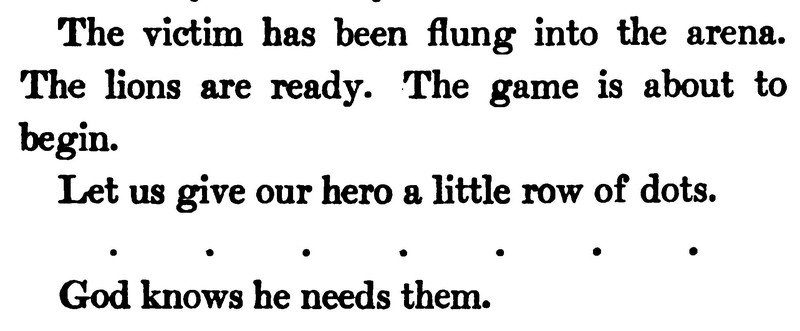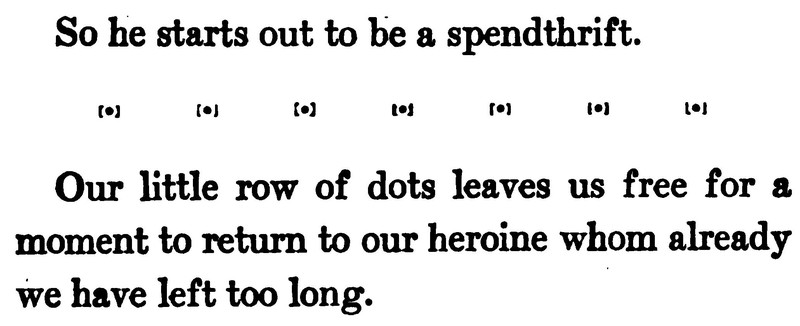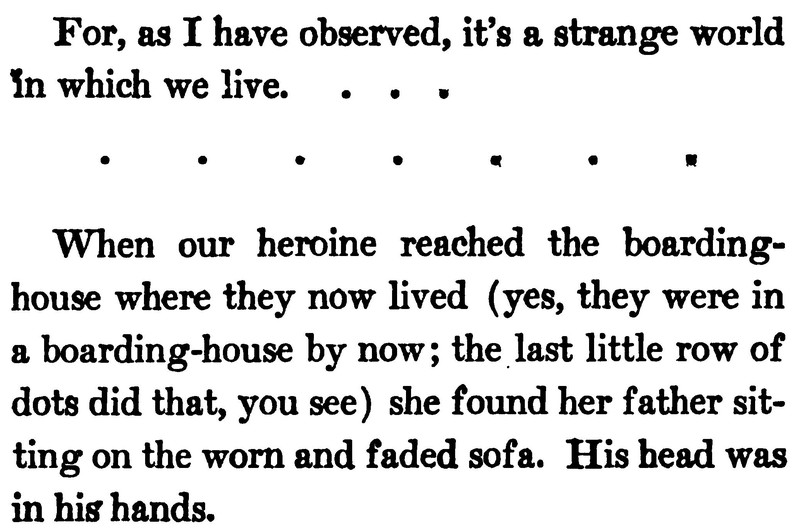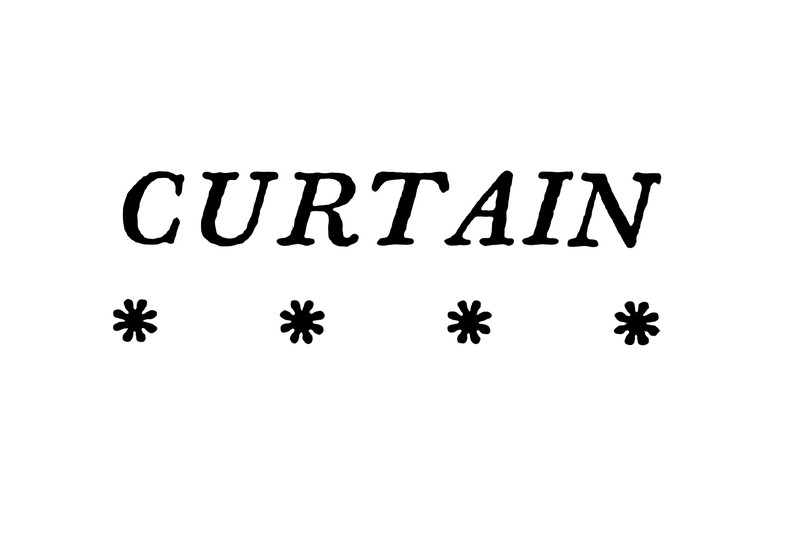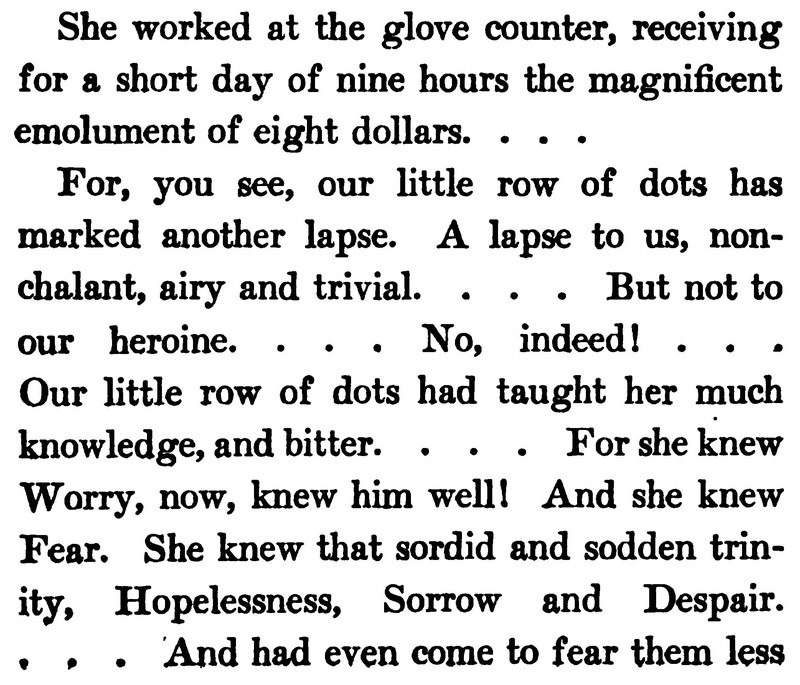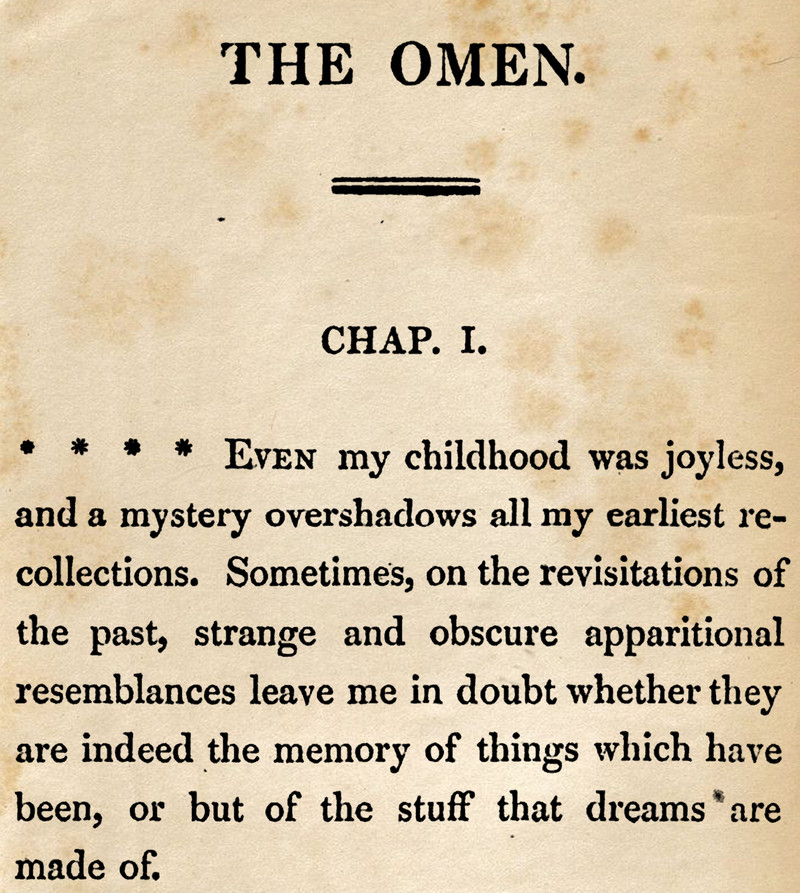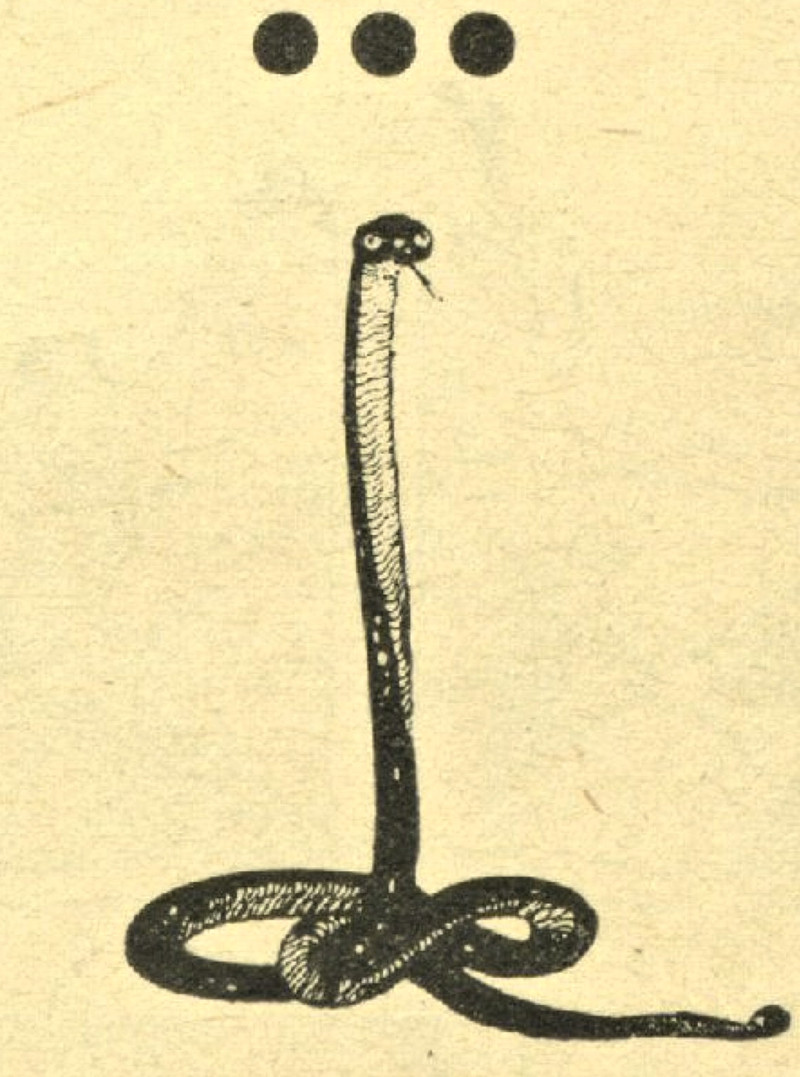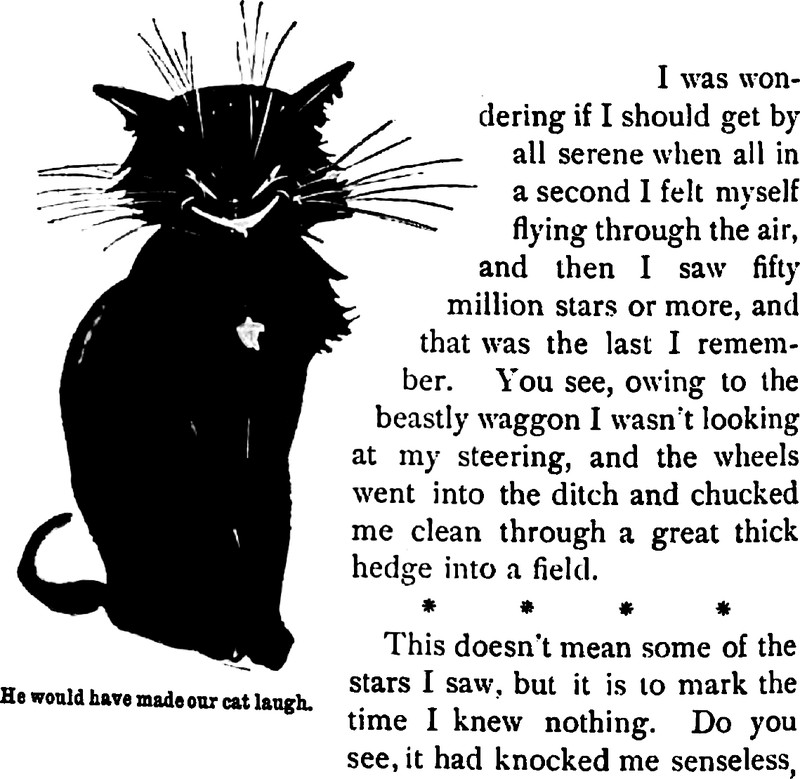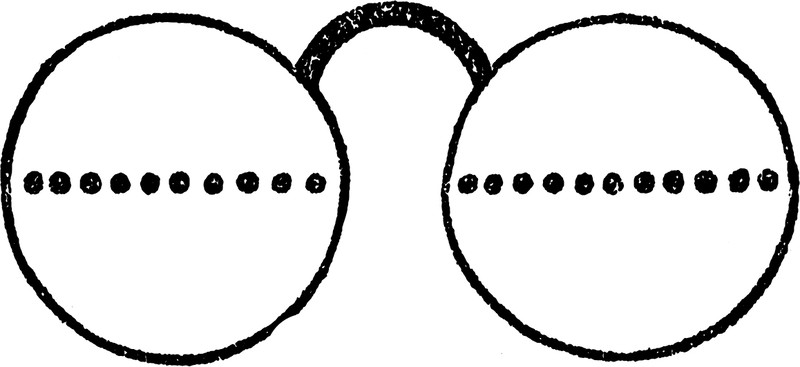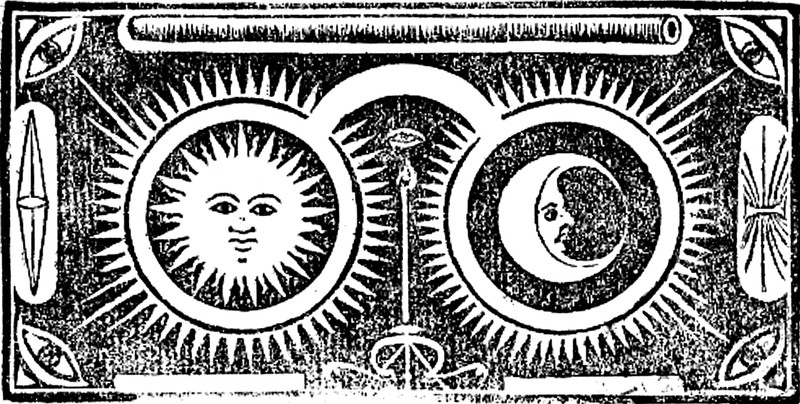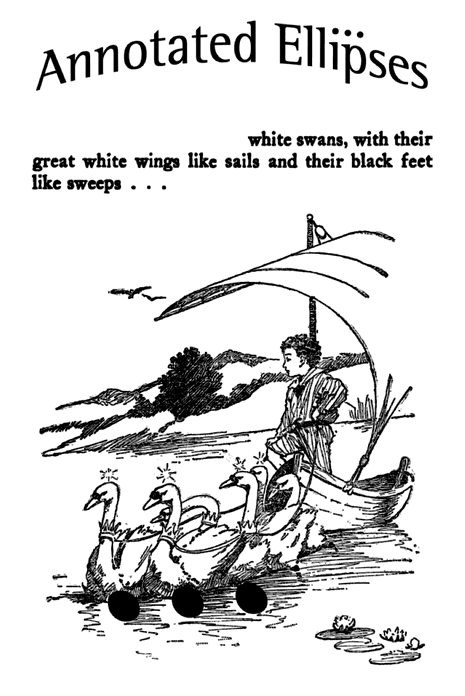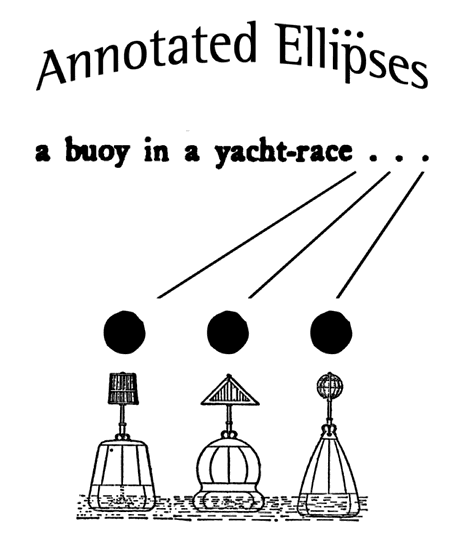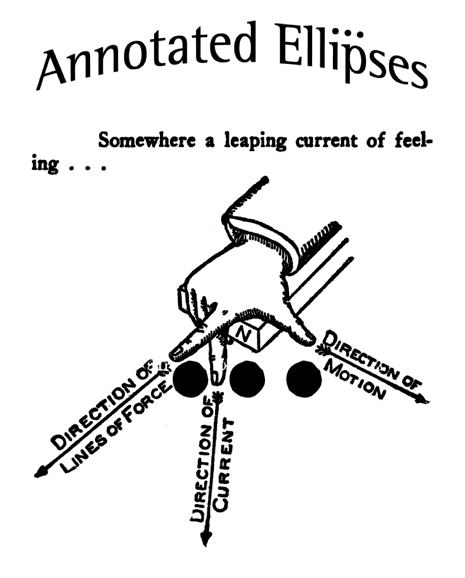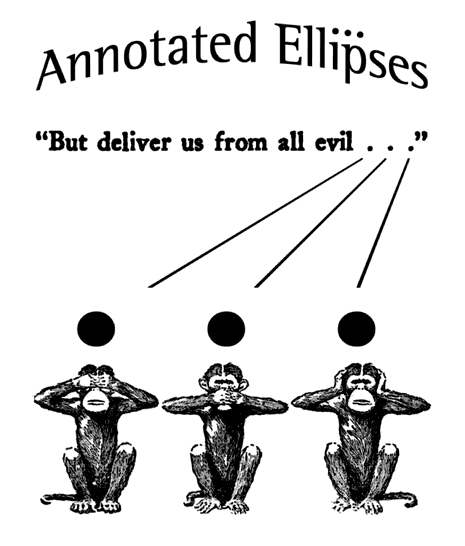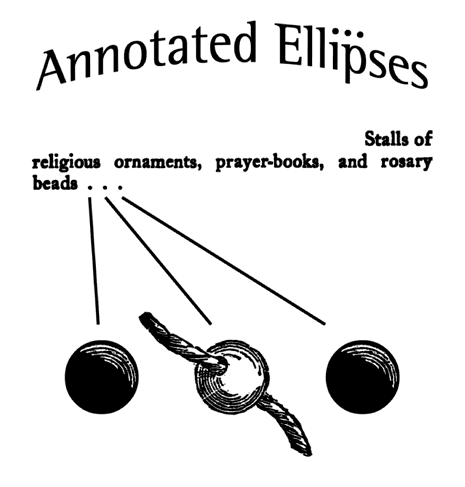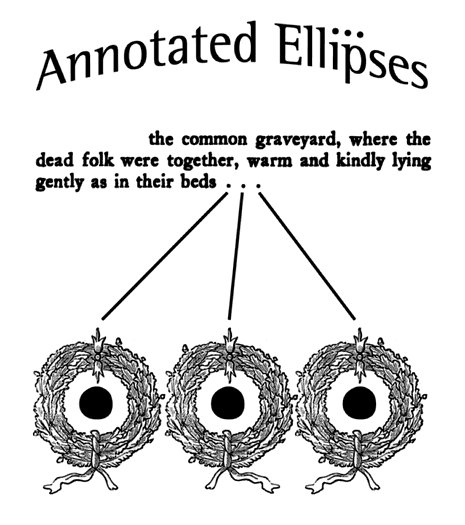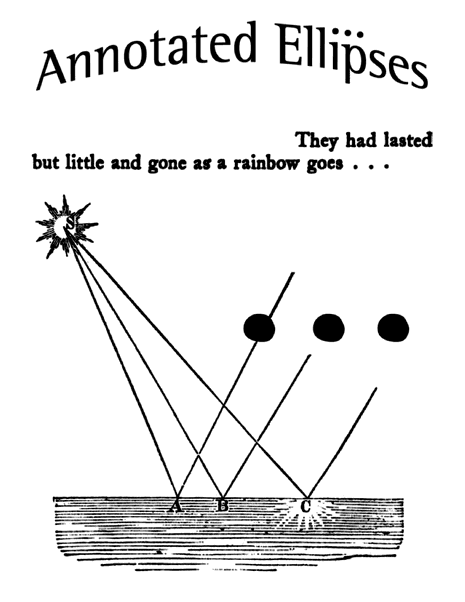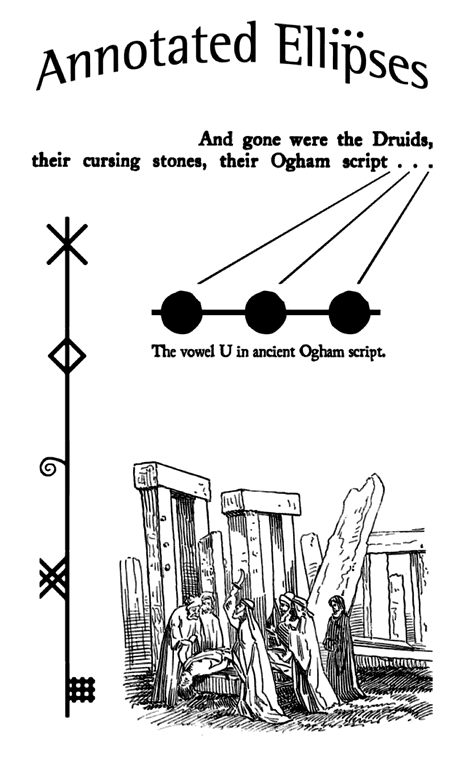Annotated Ellipses
Donn Byrne riddled his novel The Wind Bloweth (1922) with ellipses. For example, page 158 alone features no fewer than 27 of them. The ellipses don’t merely omit superfluous words or mark pauses. Far from it! In an astonishing number of cases, the ellipses illustrate the narrative, inviting the reader to “connect the dots.” What follows is an illustrated celebration of Byrne’s eccentric use of ellipses. Snippets of his text are here presented in a new order, to tell a story hidden within the ellipses. |
|
|
 |
 |
 |
The little row of dots between bosom and eyes. From Someone and Somebody by Porter Emerson Browne, 1917.
|










 |
|
|
 |
 |
 |
Long-term ex-readers of ours will recall that we love interpreting rows of section-break dots and asterisks as illustrations for the text above or below them. (In fact, we published an entire book of such interpretations, Annotated Ellipses: Revealing A Hidden Dot-To-Dot Game Within A Novelist's Eccentric Punctuation). But here's an example of the very opposite. The narrator experiences a roadside accident and sees fifty million stars, then notes that the row of asterisks does not represent said stars but rather a period of unconsicousness. From Pearson's, 1904.
|










Page 1 of 6

> Older Entries...

Original Content Copyright © 2025 by Craig Conley. All rights reserved.
|



